Having covered the importance of Story Appeal, let’s talk about how to create it on-demand.
According to Ogilvy, Story Appeal causes passers-by to ask “What goes on here?”
And I would break that down into two separate questions:
1) What’s the explanatory (back) story to this?
and
2) What’ll happen next?
The two questions are related, but move in opposite directions:
- The first question begs to know what happened up to the point at which the audience enters the story,
- The second question seeks to know the ultimate meaning for the story in terms of how it’ll end.
And in terms of creating both on-demand, the key will be two amazing quotes from Jerome Bruner, both from his book Acts of Meaning.
Here’s the first quote [italics original]:
In other words, we expect the people in our life and in society in general to behave a certain way. When they don’t — when they violate those expectations — we typically presume that such violations are intentional on the part of the other person, meaning that their actions would be understandable, if only we knew the (back) story.
The story exists to make the deviation meaningful rather than random.
For example, if you were driving along and saw someone walking down the street dressed up in full wizard regalia, it would grab your attention for a moment, and you might wonder what was going on, but you likely wouldn’t be compelled to make up a story around this anomaly.
In fact, the busier you were — the more preoccupied and distracted — the more likely you’d be to write off the wizard costume as an anomaly.
But what if you kept seeing people in wizard costumes throughout the day?
Then it would be a pattern rather than an anomaly. A pattern that deviates enough from the norm that there’d simply have t be a meaningful explanation, involving the wizards’ intent.
Once the weirdness could no longer be dismissed as random happenstance, you’d be dying to know the answer. Your curiosity would be killing you.
And I use those verbs advisedly, because your need to know would be psychologically painful.
Painful to the point where even a shy person might be compelled to ask strangers if they knew why a given passerby was dressed so oddly.
In fact, if no one you asked knew for sure, you would likely take turns making up explanatory stories. Maybe there’s a comic or fantasy convention in town? Or a renaissance fair. And so on.
The point is that the drive to “know the story” only kicks into high gear when the deviation is perceived as meaningful and intentional as compared to a culturally-ingrained expectation.
Yet to understand how this really works — to really get how to create this story appeal on demand — we have to look at a second Jerome Bruner Quote:
Here Bruner cites Kenneth Burke’s Dramatistic Pentad for evaluating scenarios, though he uses slightly different terms for each of the five elements. The Dramatistic Pentad, as Burke defined it, looks like this:
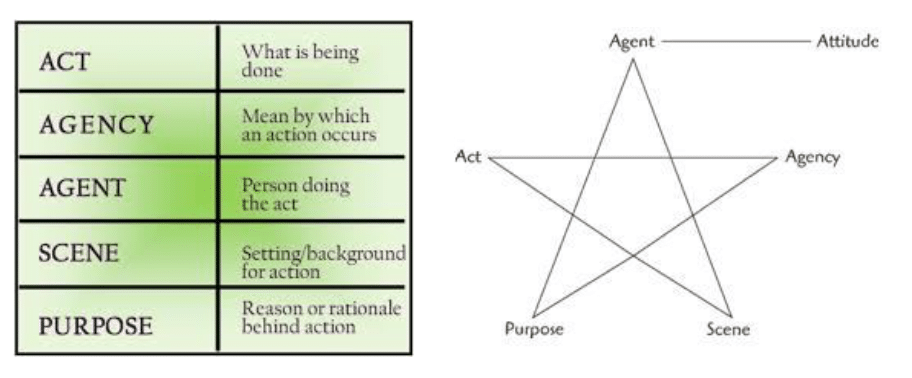
And, as Bruner points out, the key to analyzing a scene through the Pentad is to look for trouble in the form of an imbalance between these elements.
The imbalance is what provides the story appeal, which is to say the meaningful violation of cultural expectations.
When you have an Agent that’s imbalanced to the Act, you get instant story appeal:
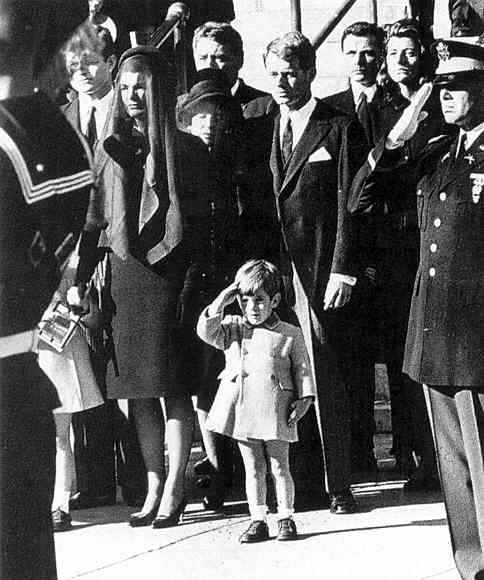
![]()
We don’t “expect” a child to have to bear-up under the loss of a parent, especially in terms of being a focal point during a burial or memorial service.
On a less extreme note, that same Agent-Act imbalance and story-appeal could look like this:

In Norman Rockwell’s America, one expected boys to get into schoolyard fist fights, not girls. A similar “role reversal” imbalance occurs in this perfume ad:
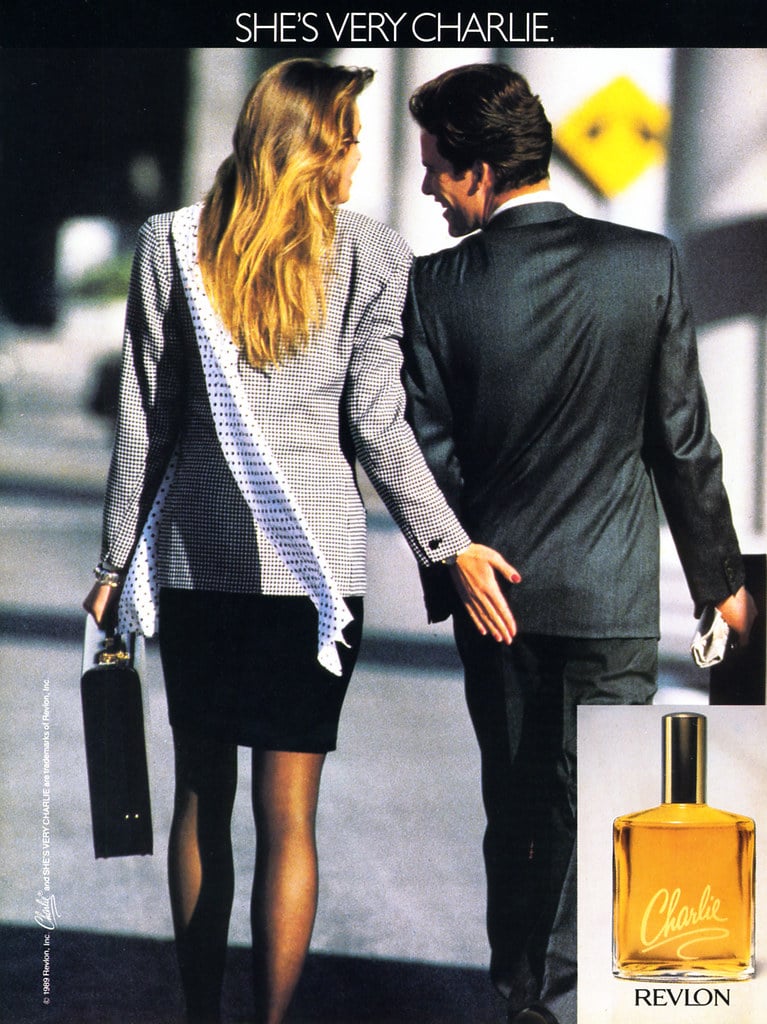
You can also have an Act-Agency Imbalance, wherein the means or tool (or lack thereof) for a given action or purpose is imbalanced:
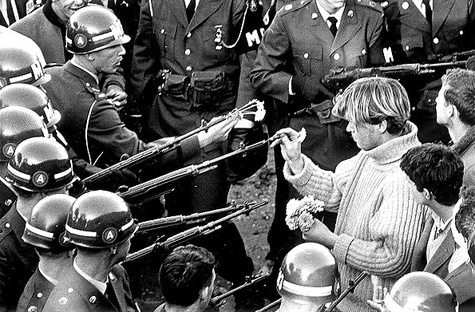

![]()

Or Actions can be imbalanced within a given Scene, as in the case here:

Or here:

But the imbalance that’s most useful for advertising purposes has to do with Attitude.
See, Kenneth Burke changed his Dramatistic Pentad into a Hexad in order to add Attitude. A person who’s Attitude is out of balance with a given Act or Scene or Purpose always creates compelling story appeal.


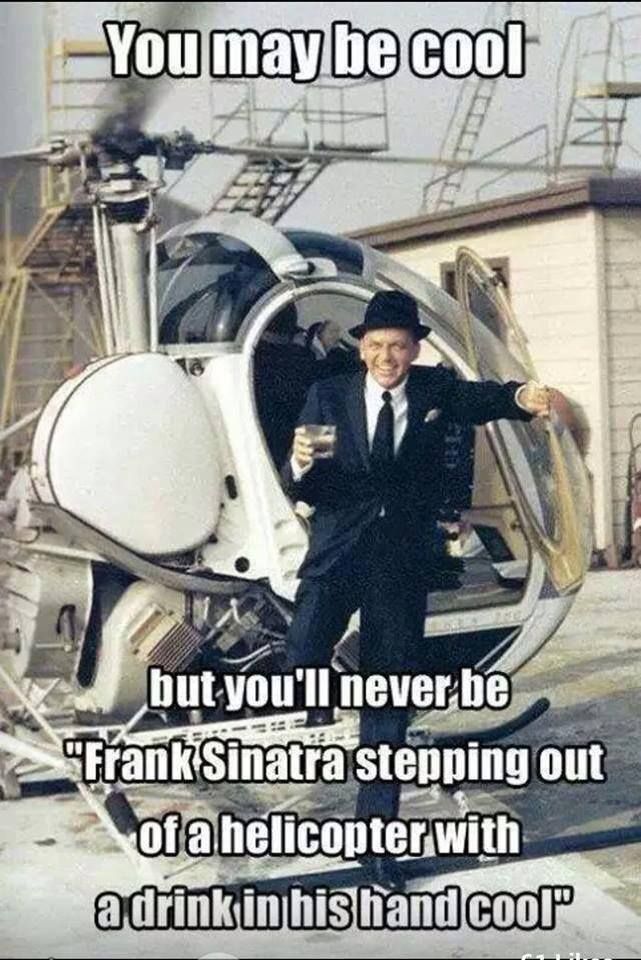
Attitude imbalances are the most useful for advertising — especially for branding — because they speak to and most directly reveal personality, character, and values.
When you value something more than “most people” you find yourself behaving in ways that so-called normal people would find “crazy” — and capturing that leads to story appeal.
Like this:
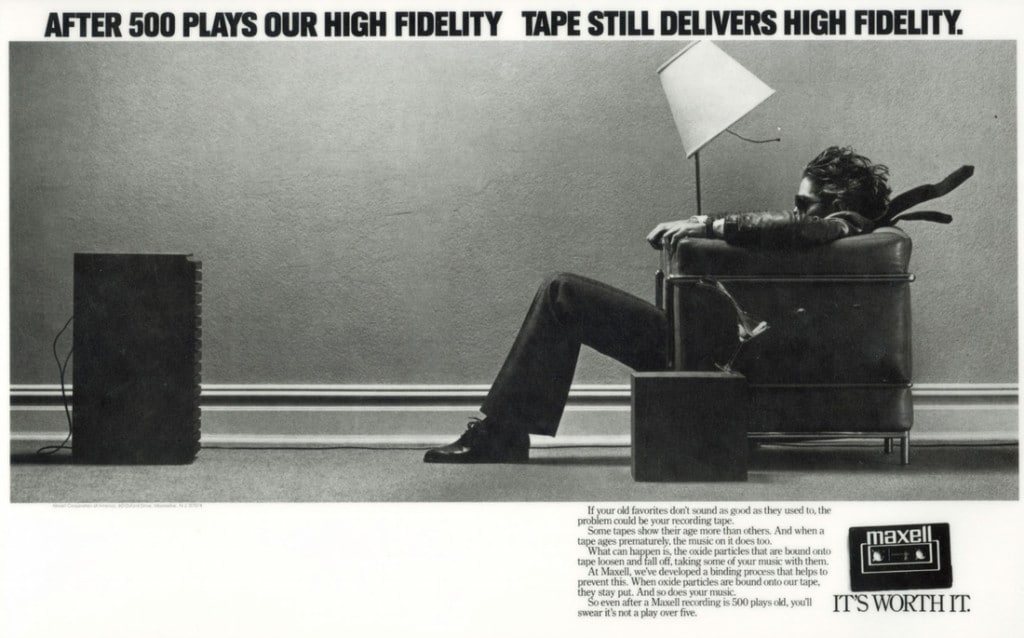
Even if you’re not familiar with the ad, you’re probably familiar with the image, which is so beloved that it’s often sold as a stand-alone poster.
In fact, they’ve even made a video about it:
The image has become such a cultural touchstone that it surprises many to learn that the image was crafted specifically for the ad.
Maxell wanted to show the obsessive attitude of Hi-Fi Stereo Fanatics in order to communicate Maxell’s blood-brother and sought-after status with those folks.
And it worked. This print ad’s story appeal “goes to eleven.”
Here are some more examples of “Attitude” Imbalances in Image-Based Print Ads (we’ll get to copy and radio ads in Part 3):


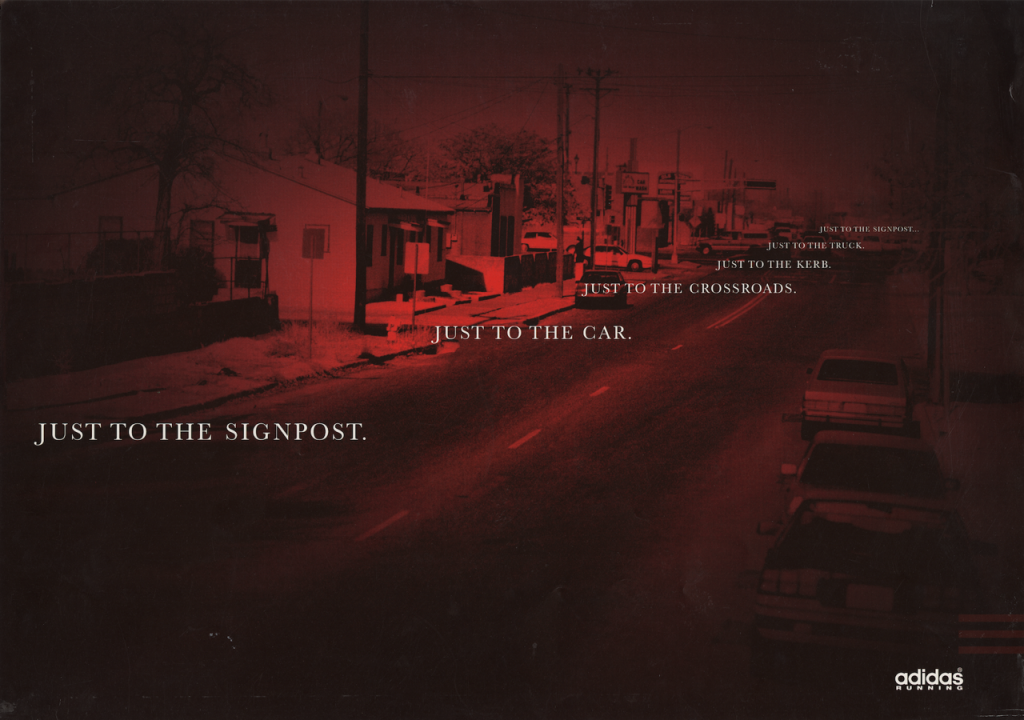
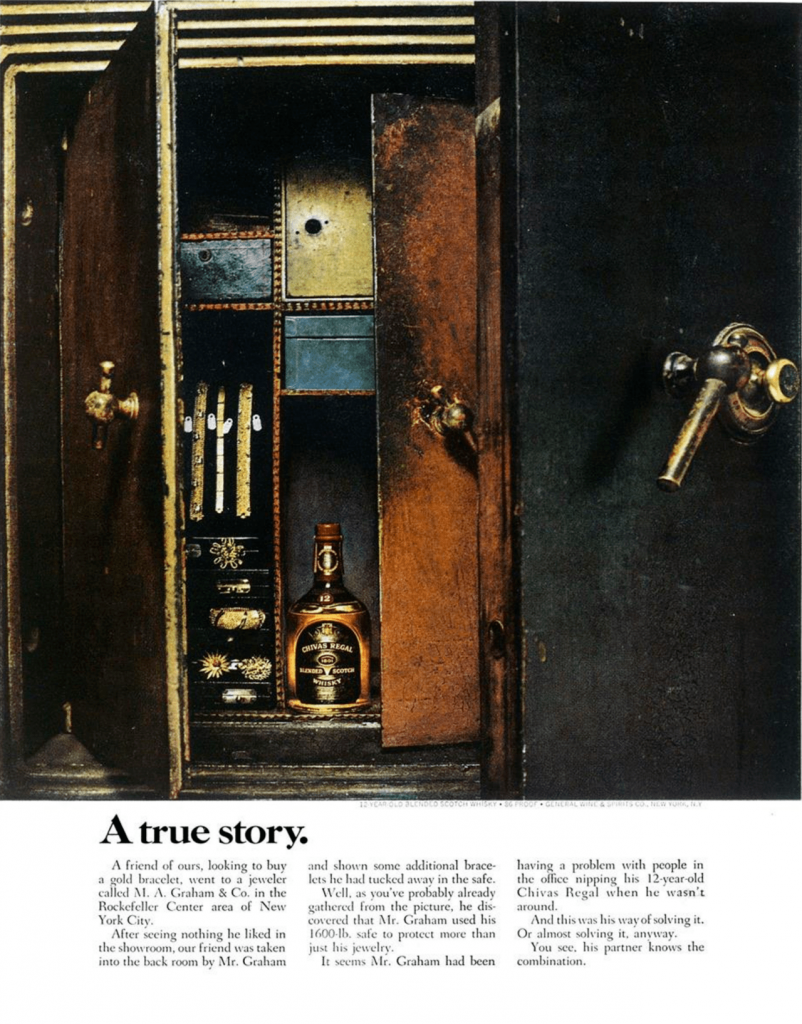
So the point is that Imbalance creates story appeal. Specifically an imbalance that conveys a deviation from expected norms that appears intentional.
This imbalance, when encountered, compels a (potential) audience to sit up and pay attention so that they can learn the story behind the imbalance.
That’s story appeal.
And it’s the key to making the Story -> Attention -> Sale cycles work.
But why do I say that Attitude is the most effective imbalance for advertising?
First, because attitude most directly conveys personality and values, and most branding involves creating affinity through personality and shared values.
Second, because some media are better than others at conveying different imbalances. Still photos, as you have seen, are great at conveying and capturing Act-Agency and Act-Agent imbalances.
In contrast, “Voice,” conveyed through copy and audio, is great at communicating an attitude Imbalance. And that makes it doubly powerful for branding ads over Radio and TV media.
But I’ll save an in-depth explanation of this for Part III.
Tune-in next week when we explore how Attitude Imbalances create story appeal in print and radio ads.
But consider this print ad a sneak peak on how copy conveys attitude:
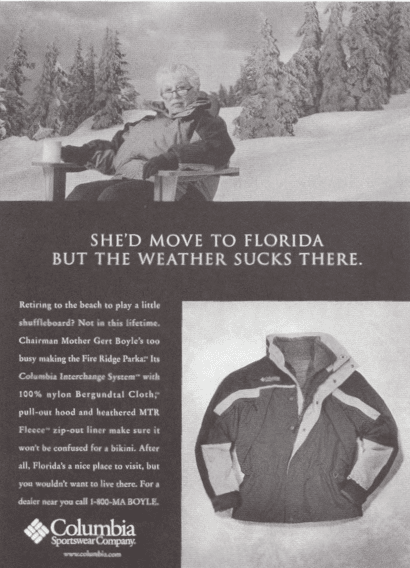
- Getting a Foot in the Door — Of Perception - November 27, 2025
- What Digital Superstars Know About Offline Advertising - November 17, 2025
- Unmistakable: A Tale of Two Boots and Branding Done Right - November 8, 2025
